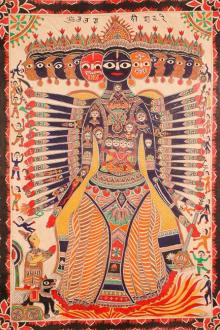The Cloister and the Hearth, Charles Reade [great novels to read txt] 📗

- Author: Charles Reade
Book online «The Cloister and the Hearth, Charles Reade [great novels to read txt] 📗». Author Charles Reade
'Qui Bavium non odit amet tua carmina, Mavi.'
“But indeed we owe all our Palladiuncula, and all our speaking, nodding, winking, sweating, bleeding statues, to these poor abused heathens; the Athenian statues all sweated before the battle of Chaeronea, so did the Roman statues during Tully's consulship, viz., the statue of Victory at Capua, of Mars at Rome, and of Apollo outside the gates. The Palladium itself was brought to Italy by Aeneas, and after keeping quiet three centuries, made an observation in Vesta's Temple: a trivial one, I fear, since it hath not survived; Juno's statue at Veii assented with a nod to go to Rome. Antony's statue on Mount Alban bled from every vein in its marble before the fight of Actium. Others cured diseases: as that of Pelichus, derided by Lucian; for the wiser among the heathen believed in sweating marble, weeping wood, and bleeding brass—as I do. Of all our marks and dents made in stone by soft substances, this saint's knee, and that saint's finger, and t'other's head, the original is heathen. Thus the footprints of Hercules were shown on a rock in Scythia. Castor and Pollux fighting on white horses for Rome against the Latians, left the prints of their hoofs on a rock at Regillum. A temple was built to them on the spot, and the marks were to be seen in Tully's day. You may see, near Venice, a great stone cut nearly in half by St. George's sword. This he ne'er had done but for the old Roman who cut the whetstone in two with his razor.
'Qui Bavium non odit amet tua carmina, Mavi.'
“Kissing of images, and the Pope's toe, is Eastern Paganism. The Egyptians had it of the Assyrians, the Greeks of the Egyptians, the Romans of the Greeks, and we of the Romans, whose Pontifex Maximus had his toe kissed under the Empire. The Druids kissed the High Priest's toe a thousand years B.C. The Mussulmans, who, like you, profess to abhor Heathenism, kiss the stone of the Caaba: a Pagan practice.
“The Priests of Baal kissed their idols so.
“Tully tells us of a fair image of Hercules at Agrigentum, whose chin was worn by kissing. The lower parts of the statue we call Peter are Jupiter. The toe is sore worn, but not all by Christian mouths. The heathen vulgar laid their lips there first, for many a year, and ours have but followed them, as monkeys their masters. And that is why, down with the poor heathen!
Pereant qui ante nos nostra fecerint.
“Our infant baptism is Persian, with the font and the signing of the child's brow. Our throwing three handfuls of earth on the coffin, and saying dust to dust, is Egyptian.
“Our incense is Oriental, Roman, Pagan; and the early Fathers of the Church regarded it with superstitious horror, and died for refusing to handle it. Our Holy water is Pagan, and all its uses. See, here is a Pagan aspersorium. Could you tell it from one of ours? It stood in the same part of their temples, and was used in ordinary worship as ours, and in extraordinary purifications. They called it Aqua lustralis. Their vulgar, like ours, thought drops of it falling on the body would wash out sin; and their men of sense, like ours, smiled or sighed at such credulity. What saith Ovid of this folly, which hath outlived him?
'Ah nimium faciles, qui tristia crimina coedis Fluminea tolli posse putetis aqua.'Thou seest the heathen were not all fools. No more are we. Not all.”
Fra Colonna uttered all this with such volubility, that his hearers could not edge in a word of remonstrance; and not being interrupted in praising his favourites, he recovered his good humour, without any diminution of his volubility.
“We celebrate the miraculous Conception of the Virgin on the 2nd of February. The old Romans celebrated the Miraculous Conception of Juno on the 2nd of February. Our feast of All Saints is on the 2nd November. The Festum Dei Mortis was on the 2nd November. Our Candlemas is also an old Roman feast; neither the date nor the ceremony altered one tittle. The patrician ladies carried candles about the city that night as our signoras do now. At the gate of San Croce our courtesans keep a feast on the 20th August. Ask them why! The little noodles cannot tell you. On that very spot stood the Temple of Venus. Her building is gone; but her rite remains. Did we discover Purgatory? On the contrary, all we really know about it is from two treatises of Plato, the Gorgias and the Phaedo, and the sixth book of Virgil's Aeneid.
“I take it from a holier source: St. Gregory,” said Jerome sternly.
“Like enough,” replied Colonna drily. “But St. Gregory was not so nice; he took it from Virgil. Some souls, saith Gregory, are purged by fire, others by water, others by air.
“Says Virgil—
'Aliae panduntur inanes, Suspensae ad ventous, aliis sub gurgite vasto Infectum eluitur scelus, aut exuritur igni.'But peradventure, you think Pope Gregory I lived before Virgil, and Virgil versified him.
“But the doctrine is Eastern, and as much older than Plato as Plato than Gregory. Our prayers for the dead came from Asia with Aeneas. Ovid tells, that when he prayed for the soul of Anchises, the custom was strange in Italy.
'Hunc morem Aeneas, pietatis idoneus auctor Attulit in terras, juste Latine, tuas.'The 'Biblicae' Sortes,' which I have seen consulted on the altar, are a parody on the 'Sortes Virgilianae.' Our numerous altars in one church are heathen: the Jews, who are monotheists, have but one altar in a church. But the Pagans had many, being polytheists. In the temple of Pathian Venus were a hundred of them. 'Centum que Sabaeo thure calent arae.' Our altar's and our hundred lights around St. Peter's tomb are Pagan. 'Centum aras posuit vigilemque sacraverat ignem.' We invent nothing, not even numerically. Our very Devil is the god Pan, horns and hoofs and all; but blackened. For we cannot draw; we can but daub the figures of Antiquity with a little sorry paint or soot. Our Moses hath stolen the horns of Ammon; our Wolfgang the hook of Saturn; and Janus bore the keys of heaven before St. Peter. All our really old Italian bronzes of the Virgin and Child are Venuses and Cupids. So is the wooden statue, that stands hard by this house, of Pope Joan and the child she is said to have brought forth there in the middle of a procession. Idiots! are new-born children thirteen years old? And that boy is not a day younger. Cupid! Cupid! Cupid! And since you accuse me of credulity, know that to my mind that Papess is full as mythological, born of froth, and every way unreal, as the goddess who passes for her in the next street, or as the saints you call St. Baccho and St. Quirina: or St. Oracte, which is a dunce-like corruption of Mount Soracte, or St. Amphibolus, an English saint, which is a dunce-like corruption of the cloak worn by their St. Alban, Or as the Spanish saint, St. Viar: which words on his tombstone, written thus, 'S. Viar,' prove him no saint, but a good old nameless heathen, and 'praefectus Viarum,' or overseer of roads (would he were back to earth, and paganizing of our Christian roads!), or as our St. Veronica of Benasco,





Comments (0)